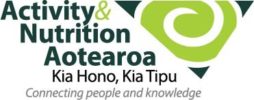24 Aug Effects of a Voluntary Front-of-Pack Nutrition Labelling System on Packaged Food Reformulation: The Health Star Rating System in New Zealand
Posted at 16:28h
in Research
Published in Nutrients 2017, 9(8), 918 Authors: Cliona Ni Mhurchu, Helen Eyles and Yeun-Hyang Choi
Abstract:
Interpretive, front-of-pack (FOP) nutrition labels may encourage reformulation of packaged foods. We aimed to evaluate the effects of the Health Star Rating (HSR), a new voluntary interpretive FOP labelling system, on food reformulation in New Zealand. Annual surveys of packaged food and beverage labelling and composition were undertaken in supermarkets before and after adoption of HSR i.e., 2014 to 2016. Outcomes assessed were HSR uptake by food group star ratings of products displaying a HSR label; nutritional composition of products displaying HSR compared with non-HSR products; and the composition of products displaying HSR labels in 2016 compared with their composition prior to introduction of HSR. In 2016, two years after adoption of the voluntary system, 5.3% of packaged food and beverage products surveyed (n = 807/15,357) displayed HSR labels. The highest rates of uptake were for cereals, convenience foods, packaged fruit and vegetables, sauces and spreads, and ‘Other’ products (predominantly breakfast beverages). Products displaying HSR labels had higher energy density but had significantly lower mean saturated fat, total sugar and sodium, and higher fibre, contents than non-HSR products (all p-values < 0.001). Small but statistically significant changes were observed in mean energy density (−29 KJ/100 g, p = 0.002), sodium (−49 mg/100 g, p = 0.03) and fibre (+0.5 g/100 g, p = 0.001) contents of HSR-labelled products compared with their composition prior to adoption of HSR. Reformulation of HSR-labelled products was greater than that of non-HSR-labelled products over the same period, e.g., energy reduction in HSR products was greater than in non-HSR products (−1.5% versus −0.4%), and sodium content of HSR products decreased by 4.6% while that of non-HSR products increased by 3.1%. We conclude that roll-out of the voluntary HSR labelling system is driving healthier reformulation of some products. Greater uptake across the full food supply should improve population diets.

